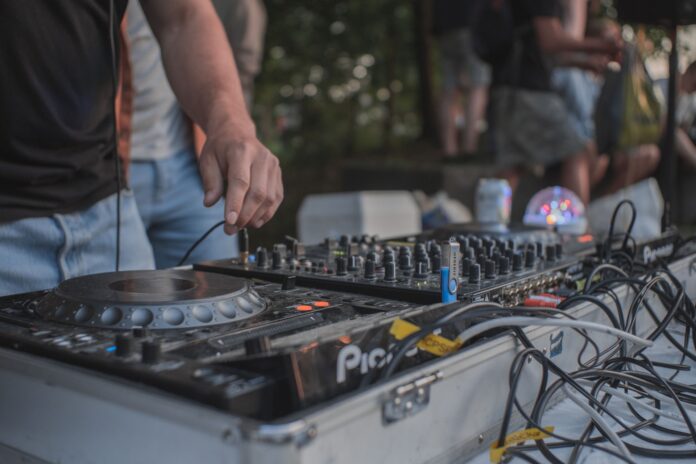Though they are the least glamorous part of being a DJ, cables and connectors affect your sound. Learning how to use your cables correctly goes a long way in creating a DJ setup that produces quality sound.
DJ cables come in different forms, and it is essential that you learn to identify them and how to connect them. Though understanding the difference between a DJ controller and a DJ mixer helps you know what goes where understanding the cables prepares you better.
Audio terminology
There are certain terms that you will hear when dealing with audio cables. Knowing what the terms mean is the first step in understanding your cables. Such terms include:
- Male vs Female: Male connectors and cables plug into a port, while female ones get plugged in. Most DJing equipment will have the ports as the ‘female’ while the cables are ‘male’.
- Output vs input: Sound is linear. This means that there is usually an output and an input. Output refers to the sound coming out of a port, while input refers to the sound coming in. The movement of sound between the output and the input is also known as signal flow.
- Balanced vs unbalanced: Analog cables come as balanced or unbalanced, and understanding the difference between balanced and unbalanced cables can take you down a technical jargon rabbit hole.
To simplify, the work of balanced analog cables is to reduce any extra noise picked up by a microphone or speaker. A balanced cable is usually longer and works best when the sound is traveling over a distance, such as at a wedding or club.
For a balanced DJ setup, you will need two cables. Unbalanced cables are used when there isn’t much distance, like in a home DJ setup. They are prone to noise interference and are usually shorter.
Analog Vs Digital Cables
Learning your cables means starting from the basics. This means knowing the difference between analog and digital cables.
Analog Cables
As the name suggests, analog cables have been around for a long while. Even now, analog cables are widely used by many because of their simplicity.
RCA
RCA refers to Radio Corporation of America. RCA plugs or phono cables are unbalanced cables. They are the most commonly used audio cables because they are everywhere.
RCAs are used to connect CDJs or turntables to a mixer. The RCA connection is usually on two levels; phono and line. Line levels are louder than phono levels and are used when working with CDJs. Phono levels, on the other hand, work best with turntables.
XLR
The XLR is a commonly used balanced plug for some DJ controllers, club mixes, and microphones. They secure very well but are very bulky to move around with, as you need two cables for a balanced signal.
TS
TS refers to the tip-sleeve. This means that it has a tip and sleeve. These cables are commonly used for unbalanced and mono signals, such as guitars.
TRS
TRS refers to tip-ring-sleeve. This means that it has a tip, a ring, and a sleeve. This type of cable is usually confused with the TS types of cables as they appear very similar, and their plugs easily fit into each other’s sockets.
The TRS cable comes in different sizes; the 1/4” and the 1/8”(3.5mm), with the 1/4 one being the most commonly used. It is usually used to create a balanced sound. Just like the XLR, its different sections handle hot, cold, and ground. DJ controllers such as the Pioneer DJ DJM-900NXS2 use this cable.
TRS cables are very versatile and used as unbalanced stereo cables like with headphones.
Speakon
Speakon cables are relatively new analog cables. They offer balanced audio and secure the cable by testing and locking. This type of cable is used with high-current signals. They are usually used to connect power amps to loudspeakers.
Digital Cables
Digital cables became popular in the 90s. Digital cables have become more popular as they reduce interference. This is because they transmit data digitally. Let’s look at some of these cables.
USB
The USB is one of the most readily available digital cables and makes a connection between your DJ equipment and your laptop or smart device.
Optical Cables
Optical cables are used to transfer high-quality audio signals over various channels as they can resist high interference. They come in the form of S/PDIF cables, which carry signals over two channels, and ADAT cables which can carry up to 8 channels. S/PDIF is used for connecting to studio monitors, while ADAT is for high-end studio production.
Midi
Midi (Musical Instrument Digital Interface) cables to transport data between equipment. They are usually used for connecting keyboards and computers. They are not as common as they were, as they have been replaced with USBs.
Thunderbolt
Originally developed by Apple, the Thunderbolt is used for the speedy transfer of information. They are effective when working with high-capacity hard drives and audio interfaces.
Purchase the Right Cables
Connecting your cables correctly is a skill every DJ should learn. Understanding what each cable does will also help you when you need to troubleshoot any challenges you come across and prevent you from potentially damaging your equipment.





